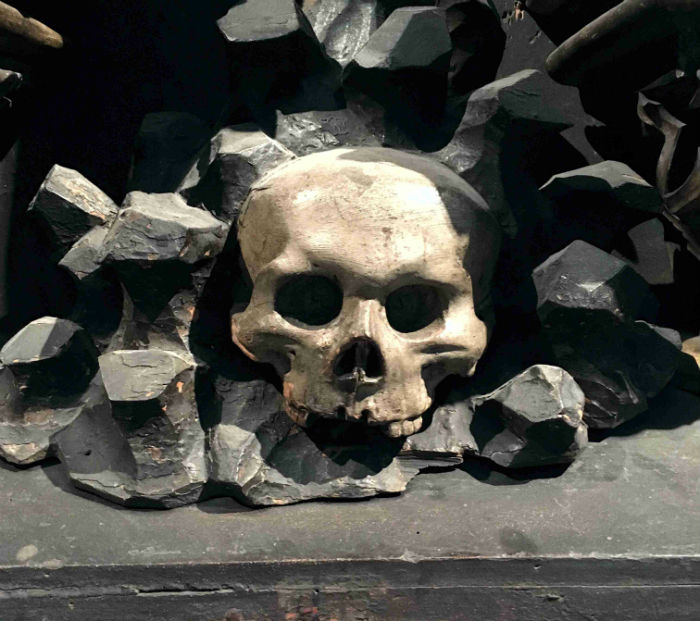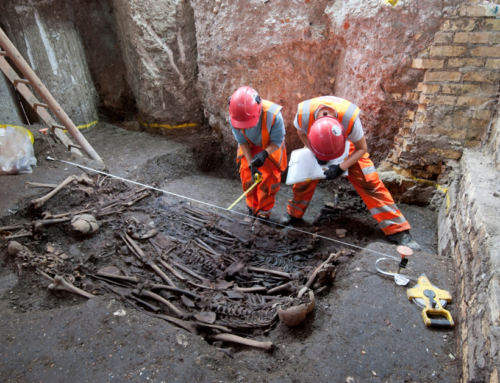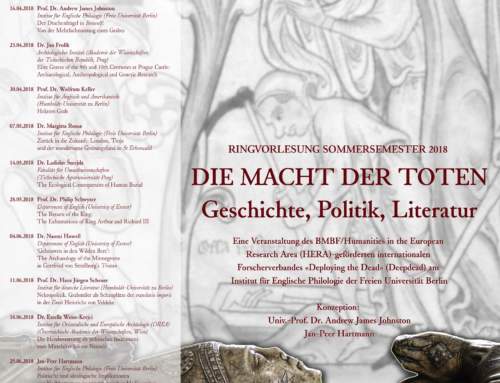Ladislav Smejda
“Every puff of wind … may blow the father into the sons eyes…
Every grain of dust that flies here, is a piece of a Christian…”
John Donne, English poet and cleric (1572-1631)
People have always been intrigued by what happens to their soul and mortal remains after death. The material part of this dead-serious question, taken as a topic for this blog post, bewildered generations of thinkers just as much as the spiritual part. Researchers from the Faculty of Environmental Sciences, Czech University of Life Sciences Prague (FES CULS), are currently investigating the long-term environmental impact of human remains. The DEEPDEAD project’s results show that chemical remnants of decomposed bodies in soil can frequently be well distinguished against the natural background values, and persist there for centuries to millennia.
However, it is not only soil, but often groundwater as well, that is affected by human burial; and cremation inevitably contributes to air emissions and depletion of limited fuels. This investigation is therefore not just tracing chemical footprints of decomposed bodies from the distant past to satisfy our morbid curiosity. Knowledge learned from the (pre)historic case studies is potentially relevant for an assessment of long-term impact of the present-day and future ways of burial on the environment that surrounds us. More people living today on our planet than ever in history logically implies a steadily increasing number of deceased in the future.
Interest groups and popular movements around the world consider quite seriously, what type of burial treatment can bring us closer to posthumous harmony with the Nature. These endeavours aim to avoid unpleasant future encounters (in the broadest sense) with substances that originate in cadavers but might present an environmental hazard. Clearly, the world should envisage and adopt ecological, environment-friendly forms of burial. Are we ready to embrace this challenge and learn some lessons from the long history of interactions with the dead as they are witnessed in their numerous forms by archaeology and related disciplines?
This emergent research area produces knowledge that can be utilised in ecology, soil science, and landscape management, as well as in the humanities and social sciences. Serious and complex questions must be considered before any society would critically reflect or even change its traditional mortuary behaviour, because deep-seated religious values, ethical concerns and scientific arguments are not likely to reach a mutual agreement easily.
Scientists at FES CULS currently address the intriguing problem of human-induced chemical change in sediments and soils affected by human burial. While the decomposition of dead bodies may be seen as a very natural, and so environment-friendly process, cultural customs of most human societies dictate the establishment of formal mortuary areas where human remains accumulate for decades and centuries. This culturally anchored refusal of random scattering of biological constituents of dead bodies across vast areas may potentially lead to locally high concentrations of certain elements and compounds that contrast with their natural levels (often phosphates, calcium and zinc, among others). The long-term ecological legacy of places dedicated to intensive burial has so far been little studied. Archaeometry and geoarchaeology are disciplines uniquely apt to address this question, collecting evidence from a wide range of periods and societies.
Experiments and analyses conducted so far in the scope of the DEEPDEAD project covered a spectrum of burial customs practiced since prehistory to the recent period, namely inhumation, cremation, and through animal proxies, as well as so-called passive excarnation (exposure of bodies to elements in open air). From an ecological point of view, cemeteries (even abandoned ones) represent landscape patches significantly influenced by human activity, with necessary impact on soils, groundwater and local biota. The first results of this research were recently presented at the General Assembly of the European Geosciences Union in Vienna. The presentation titled “Ashes to ashes, dust to dust: geochemical signals of mortuary areas”, co-authored by Ladislav Smejda, Jan Horak, Jana Alexandrova and Michal Hejcman has caught considerable media attention. The story has been covered by a number of world media, see for example:
Phys Org Tiempo Digital AFP BB News Rozhlas Star 2 Daily Sabah





Get Social